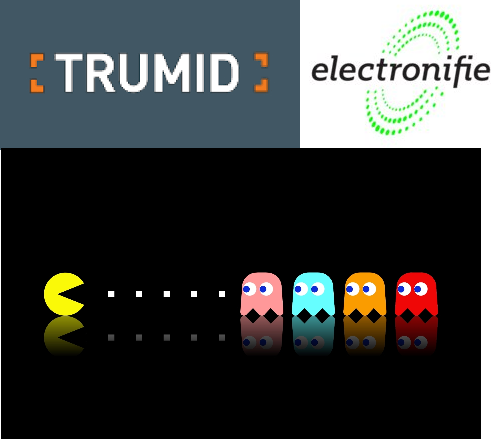The notoriously fragmented universe of upstart electronic bond trading platforms that aim to address “the lack of liquidity” concerns voiced by institutional fund managers and deliver e-bond trading tools that enhance transparency and make trading fixed income products easier for buysiders is starting to consolidate. This week Trumid, founded in 2014 and funded by among others VC icon Peter Thiel and investor George Soros announced the acquisition of competitor Electronifie, founded by former Goldman Sachs ‘braniac’ fixed income trader Amar Kuchinad. Electronifie, also founded in 2014 has been fixed on delivering an “all-to-all” round-lot trading platform for investment grade corporate bonds.
Fintech merchant bank SenaHill Partners, which spearheaded the initial funding round for Trumid during its startup phase and was later engaged by Electronifie to assist in identifying strategic investors, brought the two companies together for transaction. SenaHill Securities served as financial and strategic adviser to Electronifie in the transaction. Upon closing, over 350 institutions will be on board Trumid Market Center, the company’s all-to-all trading network for corporate bonds. This includes 20 of the top 25 asset managers in the world and 60 broker-dealers. Following a regulatory approval process, Trumid expects the transaction to close early in the second quarter of 2017. Terms of the transaction were not disclosed.

“We pride ourselves on building a strong user network and delivering great products that make corporate bond trading easier. Trumid continuously strives to improve all aspects of our clients’ trading experience,” says Mike Sobel, president of Trumid. “The Electonifie team shares that vision and the combination of our networks will enhance the all-to-all liquidity available on the Trumid platform.”
Trumid recently closed a USD28 million capital raise, with participation from existing lead investors Thiel and Soros, as well as from new partners including CreditEase Fintech Investment Fund. With this capital, Trumid will continue to proactively grow and improve its offering, including its data science effort Trumid Labs, expansion of its salesforce, and development of new products.
According to one e-bond trading pioneer and a SenaHill Network Advisory Board member, who in 1994 helped introduce BondNet, the industry’s first web-based, inter-dealer electronic trading platform for corporate bonds, stated “As evidenced by the nearly two-dozen initiatives launched during the past 4-5 years alone, there’s been no shortage of smart folks who recognize the need for a centralized platform in which corporate bond market participants can transact in an efficient manner, particularly in the Dodd-Frank world in which the role of liquidity-providing sell-side dealers has been greatly diminished. The plethora of platforms launched during the recent decade has created further fragmentation within an already-fragmented marketplace, so now it makes perfect sense for there to be a consolidation. This deal is a clear sign that roll-up schemes, where the vision that 1+1=3 is the next logical step for those who embrace the view that electronification of bond trading is good thing.” Continue reading



